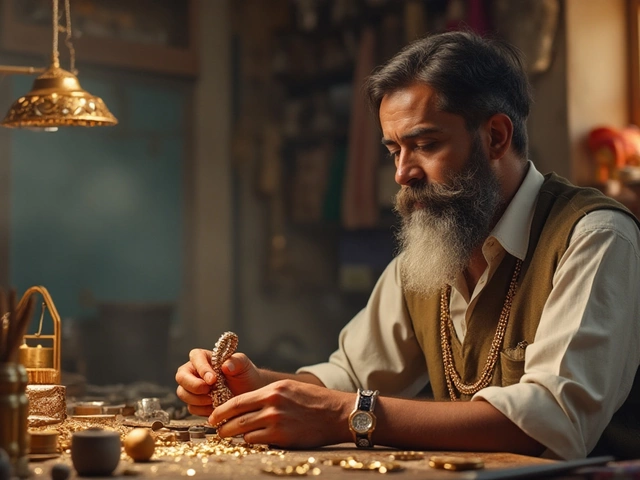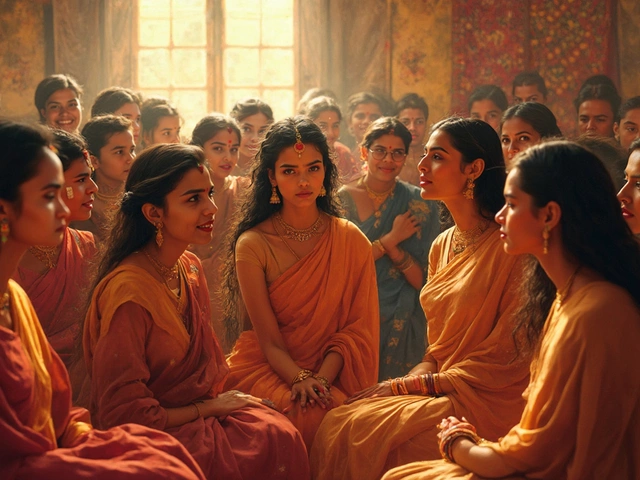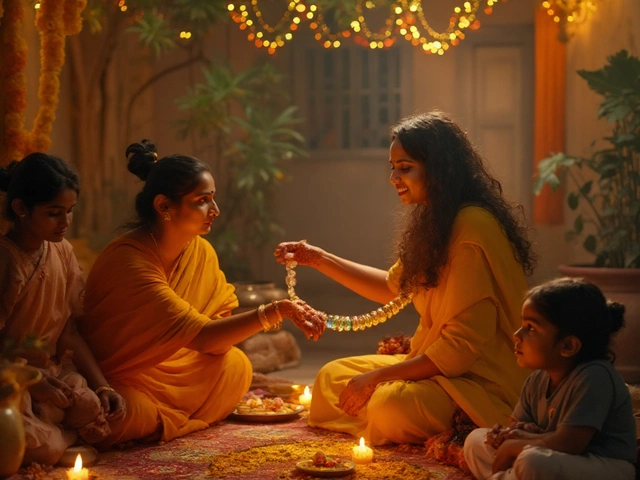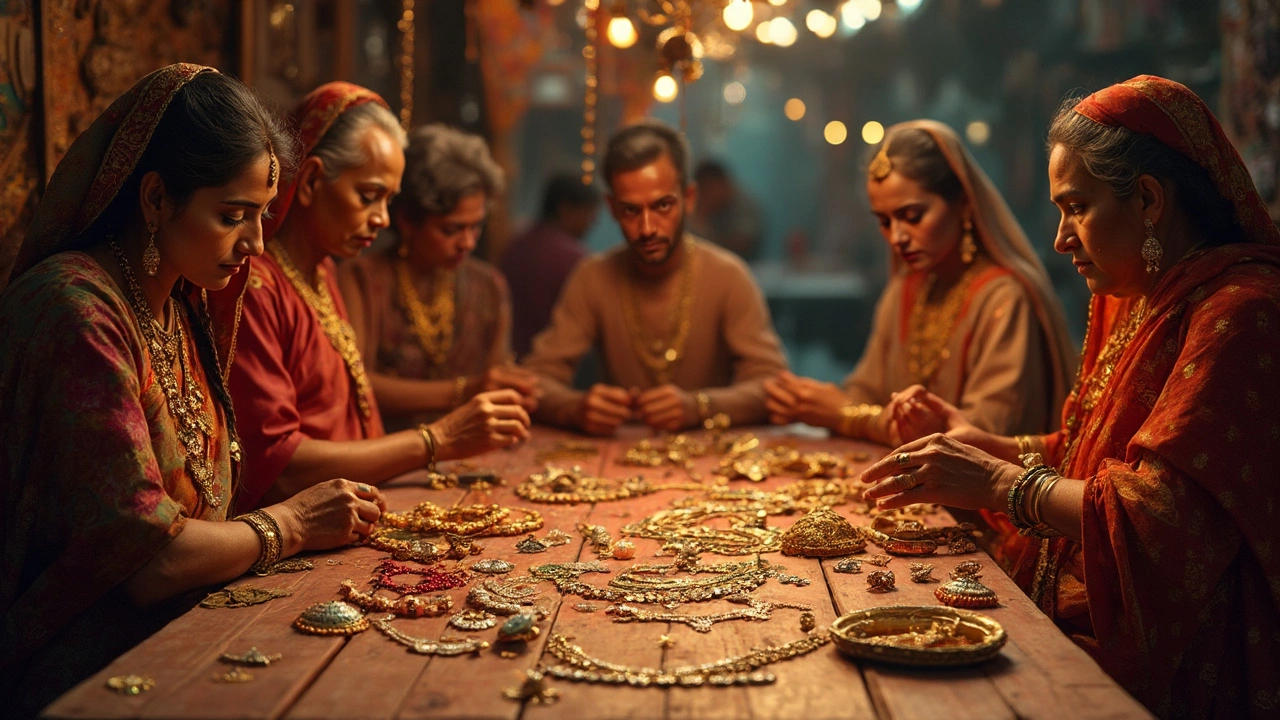
Here’s a shocker—not all antique jewellery is a goldmine when you flip it. Some pieces that look dazzling in your hand don’t pull in half the cash you’d expect. If you’re getting serious about antique jewellery, whether you collect or invest, resale value has to be on your radar.
Start by knowing the stuff people want. Buyers, especially in 2025, are picky. They want jewellery that’s rare, but not so outdated nobody wears it. Age matters, but condition counts even more. There’s no magic formula, but certain materials, makers, and eras consistently win at resale.
Ever wondered if that Georgian brooch or Art Deco ring will actually pay off later? If it’s solid gold, signed by a famous maker, or sports a rare gemstone (think Old Mine diamonds or natural pearls, not glass or paste), you’re probably in luck. But beware—damaged settings, mixed stones, or pieces that have been ‘improved’ can kill your returns.
Market tastes can shift fast. A piece hot in 2020 might be cold now. But timeless basics like 18ct gold chains or signed Cartier pieces never go out of fashion. If you’re aiming for safe bets, those are good roads to take.
- Why Resale Value Matters in Antique Jewellery
- Top Jewellery Materials with High Resale Value
- Most Sought-After Antique Jewellery Styles
- Designer Names and Hallmarks That Matter
- Smart Buying and Selling Tips
Why Resale Value Matters in Antique Jewellery
So, what’s the big deal about resale value when it comes to antique jewellery? Simple—unless you want to wear something forever, you want your money back when you’re done. Unlike regular fashion jewellery, antique pieces can sometimes go up in price over time, but only if you’ve picked wisely. People right now are much more aware of what holds value, thanks to more info online and a steady flow of cool auctions that hit the news every year.
The harsh truth: not every old ring or brooch is a jackpot. Most folks think age alone means big money, but that’s a myth. Resale value is all about demand, rarity, materials, and condition. If you ignore these, you could drop a fortune on a necklace that resells for less than a new smartphone.
Dealers, collectors, and even regular folks use antique jewellery like an investment—kind of like art or watches. They’re watching market trends and trying to guess what’s hot next. Places like Sotheby’s and Bonhams report that signed vintage pieces and gold are getting higher bids every year. Here’s a quick look at price trends for different jewellery types over the past five years:
| Jewellery Type | 5-Year Avg. Price Change (%) |
|---|---|
| Signed Gold Pieces | +32% |
| Victorian Diamond Rings | +18% |
| Art Deco Brooches | +10% |
| Pearl Necklaces | -8% |
Don’t forget about insurance either. Insurers consider resale value when deciding what your premium will be. If your piece isn’t worth much, they won’t pay out much if it’s lost or stolen. Pretty important if we’re talking about rings, bracelets, or earrings that sometimes cost as much as a car.
If you’re thinking of passing something on to your kids, only the pieces with strong resale value will really stand the test of time. A great ring with a classic design could give your family a financial backup plan someday. So when picking out antique jewellery, always keep one eye on resale potential. It saves money, gives peace of mind, and might even put you ahead of the game later.
Top Jewellery Materials with High Resale Value
If you want your antique jewellery to really hold or even grow in value, what it’s made of is a huge deal. Not all materials are equal. Some stay in demand year after year, no matter what’s trendy. Here’s what you should keep high on your list.
Gold is always at the top. It doesn’t just hold value—it usually keeps pace with inflation, and sometimes jumps way up if the economy gets shaky. 18ct or 22ct gold is the sweet spot for antique pieces. If a brooch or bangle comes in anything less than 9ct, buyers get nervous it won’t keep value. Yellow gold is classic, but rose and white gold from Edwardian and Art Deco periods pull in solid money too.
Platinum showed up big time around the turn of the 20th century. It’s tougher than gold, so it lasts longer, and collectors pay extra for Edwardian and Deco platinum rings. It’s pricier than gold per gram, and some estimate platinum jewellery resells for 20-30% more than gold pieces of similar age and style.
Ever heard about natural pearls? Not cultured, but wild-caught pearls from before the 1920s. These can make a piece go from a couple hundred to tens of thousands. Buyers are willing to pay so much because these pearls are incredibly rare today. South Sea and Persian Gulf pearls get the highest offers.
Let’s not leave out gemstones. Original old-cut diamonds, like Old Mine or Old European cuts, beat newer stones in both charm and pricing. Untreated sapphires and rubies, especially from Burma or Kashmir, rake in high bids. Emeralds with strong colour and no oiling do well too, but beware heavy repairs—they can drop value a ton.
- Stick with untreated natural stones if you can prove it (certificates help a lot).
- Look for hallmarked platinum or gold, anything below 9ct isn’t worth much.
- Avoid low-value stones set as replacements or heavily restored pieces.
| Material | Typical Resale Value (Compared to New) | Notes |
|---|---|---|
| 18ct Gold | 70%-90% | High demand, steady market |
| Platinum | 80%-100% | Rare, often outperforms gold |
| Natural Pearls | 200%+ | Wild pearls can double in value at auction |
| Old-Cut Diamonds | 75%-120% | Unique cuts + age boost price |
| Untreated Sapphires/Rubies | 100%-150% | Origin and treatment are key |
Watch out for antique jewellery that’s been ‘improved’ with modern stones or recast into new gold—it usually trades for less than untouched originals. The safest bet? Go for substance and proof: full hallmarks, natural stones, and as close to original as you can find.
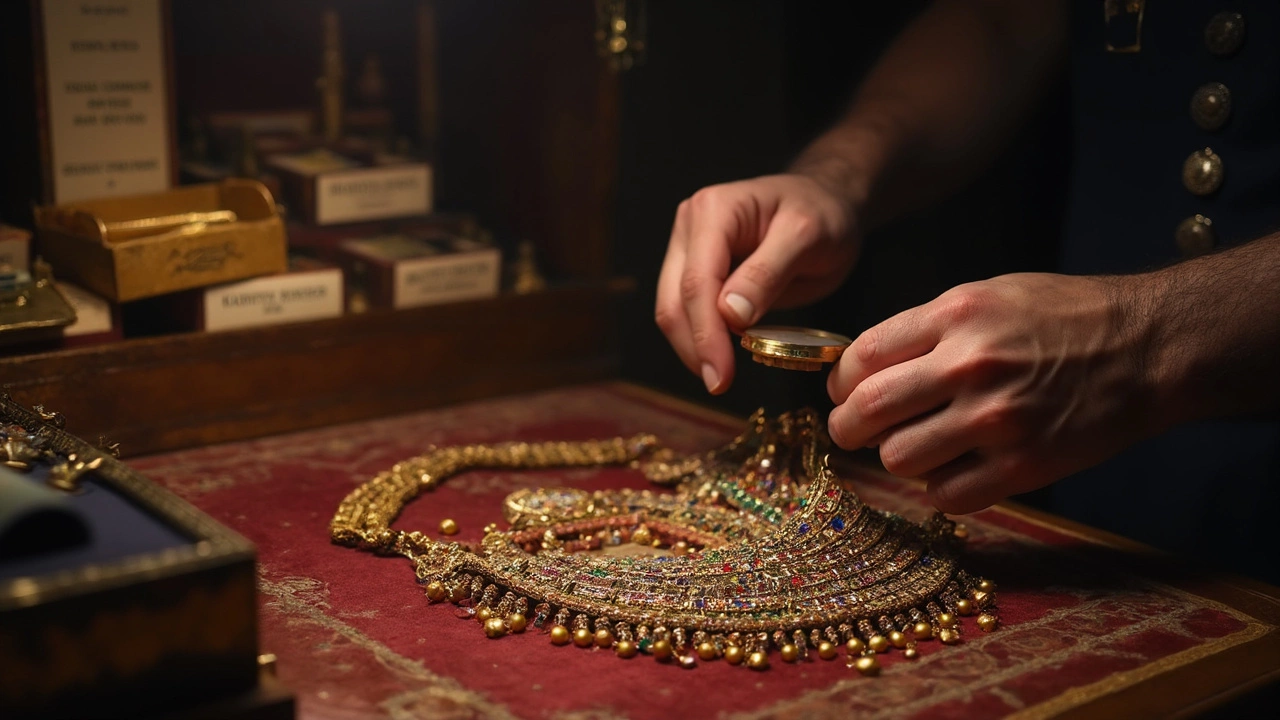
Most Sought-After Antique Jewellery Styles
If you want a piece with real resale backbone, focus on styles collectors and buyers always chase. Some eras and types keep showing up at top auctions and are snapped up on resale sites. Not every old bracelet or brooch pulls a crowd, so here’s what actually sells high:
- Victorian jewellery: Think pieces from 1837 to 1901, especially mourning jewellery (usually dark, sentimental, set with hair) and lockets with detailed engravings. Unusual designs and rare gem settings boost prices.
- Art Deco designs: Anything from the 1920s and 1930s with geometric patterns, platinum, big diamonds, or onyx is red hot. Popular brands like Cartier doubled down on these looks, so signed stuff draws serious bids.
- Georgian pieces: These are pretty hard to find, made before 1837. If something’s still in good condition from this era, it’s rare—expect high value for original settings and hand-crafted details.
- Edwardian jewellery: Delicate filigree, platinum, and natural pearls were big here. Buyers love this style’s high craftsmanship and airy feel, so rings and tiaras from this age attract collectors.
- Mid-century modern: People are snatching up bold 1950s–1960s gold bracelets, chunky cocktail rings, and anything with big natural stones thanks to current fashion revivals.
If you’re leaning toward resale, pay attention to condition and originality. Polished-up or heavily repaired stuff can drop in value fast, even if it’s from a popular era. Signed pieces from known makers almost always fetch more, so those little hallmarks matter.
| Style / Era | Peak Years | Resale Popularity (1-5) |
|---|---|---|
| Victorian | 1837–1901 | 4 |
| Georgian | 1714–1837 | 5 |
| Art Deco | 1920–1939 | 5 |
| Edwardian | 1901–1915 | 4 |
| Mid-century Modern | 1950–1969 | 3 |
So if you need one quick takeaway: pieces from the antique jewellery big leagues—especially in great condition and with papers—have the best shot at a solid return.
Designer Names and Hallmarks That Matter
If you care about antique jewellery with the best resale value, you can’t ignore designer names and hallmarks. These small details turn ordinary pieces into hot property that collectors hunt for. Let’s be real—nobody gets excited about jewellery with no story behind it. But flash a Cartier signature or an original Tiffany & Co. hallmark and watch buyers line up.
Here’s why this matters: famous brands are trusted for quality, rarity, and craftsmanship, so people feel confident paying top dollar. Plus, hallmarks prove the piece is authentic, which is a massive deal in a market flooded with fakes and copies.
Some designer marks that push prices way up include:
- Cartier – Their signature can double or triple the value of a simple gold item versus a generic one.
- Tiffany & Co. – Especially if you spot an older stamp from the late 1800s.
- Boucheron and Van Cleef & Arpels – Both French powerhouses with a cult following worldwide.
- Bvlgari – High demand, especially for vintage 1960s and 70s pieces.
- Georg Jensen – For silver jewellery, no name is hotter for Scandinavian collectors.
Hallmarks go beyond brand names. In the UK, pieces are stamped for metal purity and date, which can help you figure out if it’s legit and from the right era. In the US, original maker’s marks matter if the brand has a history—look for brands like David Webb or Harry Winston.
Check out this price difference—the table below compares unsigned versus signed pieces at recent auctions:
| Item | Unsigned Price (USD) | Signed Price (USD) |
|---|---|---|
| Art Deco Platinum Diamond Brooch | $3,500 | $11,000 (Cartier) |
| Gold Link Bracelet | $2,000 | $5,300 (Tiffany & Co.) |
| 1960s Ruby Ring | $900 | $2,800 (Van Cleef & Arpels) |
Spotting the right hallmark isn’t hard if you know what to look for. Get a good loupe (or use your phone’s magnifier), look for clear stamps, and don’t forget that dodgy, blurry marks often mean trouble. Always check any stamps against photos from official sources—it’s easy to get caught out by a sneaky fake.
If you’re buying for resale, pick pieces with well-documented signatures, official paperwork, or even original boxes. That stuff doesn’t just sit in the drawer—it seriously boosts your final sale price.
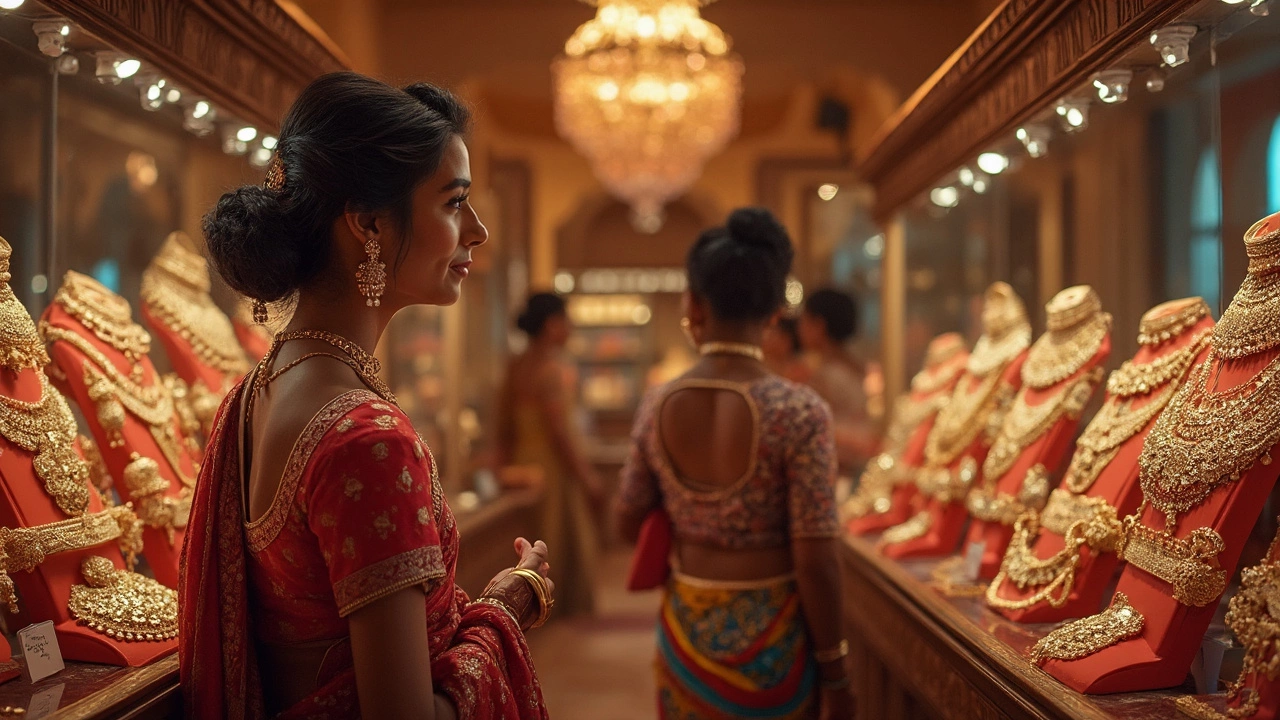
Smart Buying and Selling Tips
If you want to make smart moves in the world of antique jewellery, you’ve got to be a bit streetwise. The goal is simple: buy pieces that others will want and sell them at the right time, to the right people. Here’s how you can boost your chances of making money rather than mistakes.
First up, know your market. Watch auction results—websites like Sotheby’s and Bonhams are goldmines for real pricing info. If Victorian lockets with enamel work are smashing estimates this year, that’s a real trend, not just hype.
Condition is king. Even tiny chips or missing stones can cut resale value by half or more. Always check for loose clasps, dull stones, repairs, or weird solder marks. Don’t buy pieces “to restore” unless you’ve got connections to top-tier jewellery restorers (and know they won’t cost more than the piece is worth afterward).
- Stick to popular periods: Georgian, Victorian, Edwardian, and Art Deco usually go for better prices than mid-century or newer vintage.
- Buy from trusted sources—reputable antique dealers, certified auctions, or sellers with a return policy. Avoid buying blind online just because a listing “looks legit.”
- Look for original boxes, papers, or maker’s marks. These extras boost value and make selling easier.
- If you can, buy signed pieces from names like Cartier, Tiffany, and Boucheron. Their jewellery never really tanks—it rides out those market dips stronger than no-name pieces.
- Document what you buy. Good photos, receipts, and even old valuations all help when you’re flipping jewellery down the line.
Now, don’t just hold forever—get the timing right. If there’s a buzz about Art Deco right now, but you’ve got Edwardian brooches, it’s okay to wait. But don’t be stubborn; if trends shift, let go before values slide.
Getting a professional valuation before you sell is a must. It costs a bit, but you’ll go in with your eyes open—and avoid the classic trap of underselling something rare.
| Type | Resale Value (%) |
|---|---|
| Georgian Gold Ring | 70-90% |
| Victorian Brooch (with maker’s mark) | 60-85% |
| Unsigned Edwardian Pendant | 40-65% |
| Art Deco Platinum Ring (signed) | 90-110% |
| Generic 1950s Gold Chain | 30-50% |
Finally, shop around when it’s time to sell. Don’t accept the first offer from a local dealer or pawn shop. Compare prices at auction houses, specialist online platforms, and even collector forums. Sometimes one buyer will pay double what the next would.
The short version: buy wisely, care for your pieces, and sell to people who actually want what you’ve got. That’s how you make antique jewellery work for you.

